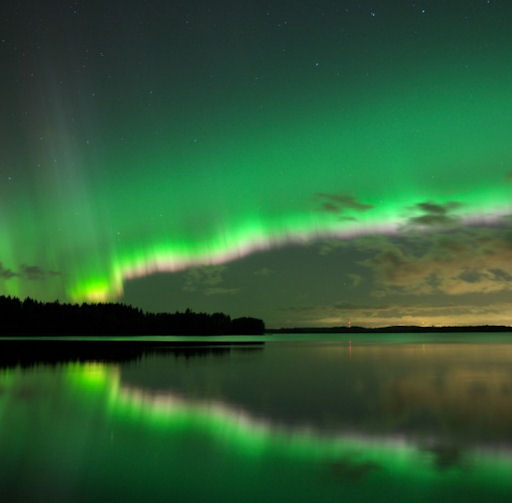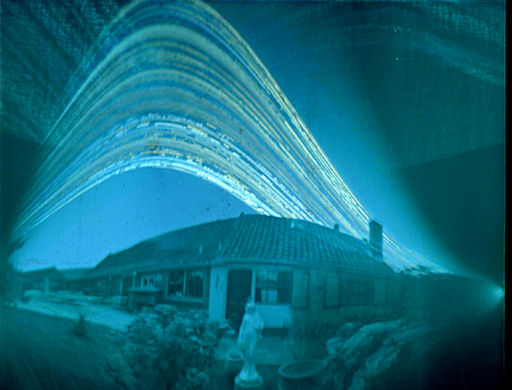FIRST DAY OF NORTHERN AUTUMN: The seasons are changing. Today, Sept. 22nd at 10:49 a.m. EDT, the sun crosses the celestial equator heading north. This marks the beginning of autumn in the northern hemisphere and spring in the southern hemisphere. At this time of year, day and night are of nearly equal length, hence the name "equinox" (equal night).
AUTUMN LIGHTS: The onset of northern autumn means it's aurora season. For reasons researchers don't fully understand, equinoxes are the best times to see Northern Lights. Right on cue, the Arctic Circle is glowing. Tom Eklund sends this picture taken Sept. 20th from Akaa, Finland:
"This was one nice auroral event--maybe the best display so far during this solar cycle!" says Eklund. "The vivid green belts with their pink lower edges were breaktaking."
The show's not over. A solar wind stream is expected to hit Earth's magnetic field this weekend, sparking more fall colors around the Arctic Circle. Aurora alerts: text, voice.
SEASON IN A BEER CAN: Jan Koeman of the Netherlands has captured an entire season in a single beer can. On June 21st, Koeman assembled a solargraph--a simple pinhole camera consisting of a beer can lined with photographic paper--and throughout the summer of 2012 he used it to record the sun's daily motion across the Dutch sky. Yesterday, Sept. 21st, he removed the photo-paper for inspection:
"As you can see, the summer wasn't too bad at all!" says Koeman. "There was l ots of sunshine in the backgarden of my parents in Middelburg."
Next up: Autumn in a beer can. Stay tuned.
Solargraph How-to Guides: #1, #2, #3
![]()

![]()
Solar wind
speed: 433.3 km/sec
density: 1.5 protons/cm3
explanation | more data
Updated: Today at 1456 UT
![]()
X-ray Solar Flares
6-hr max: B5 1230 UT Sep22
24-hr: B5 1230 UT Sep22
explanation | more data
Updated: Today at: 1459 UT
![]()
![]()
![]()
Daily Sun: 22 Sep 12
![]()
![]()
Solar activity is low. None of these sunspots is actively flaring. Credit: SDO/HMI
![]()
![]()
![]()
Sunspot number: 74
What is the sunspot number?
Updated 22 Sep 2012
Spotless Days
Current Stretch: 0 days
2012 total: 0 days (0%)
2011 total: 2 days (<1%)
2010 total: 51 days (14%)
2009 total: 260 days (71%)
Since 2004: 821 days
Typical Solar Min: 486 days
Update 22 Sep 2012
The Radio Sun
10.7 cm flux: 117 sfu
explanation | more data
Updated 22 Sep 2012
![]()
![]()
![]()
Current Auroral Oval:
Switch to: Europe, USA, New Zealand, Antarctica
Credit: NOAA/POES
![]()
![]()
![]()
Planetary K-index
Now: Kp= 1 quiet
24-hr max: Kp= 2 quiet
explanation | more data
![]()
Interplanetary Mag. Field
Btotal: 2.5 nT
Bz: 1.8 nT north
explanation | more data
Updated: Today at 1457 UT
![]()
![]()
![]()
Coronal Holes: 22 Sep 12
![]()
![]()
A solar wind stream flowing from the indicated coronal hole should reach Earth on Sept 22-23. Credit: SDO/AIA






